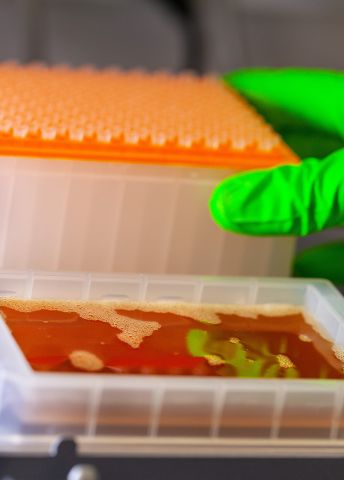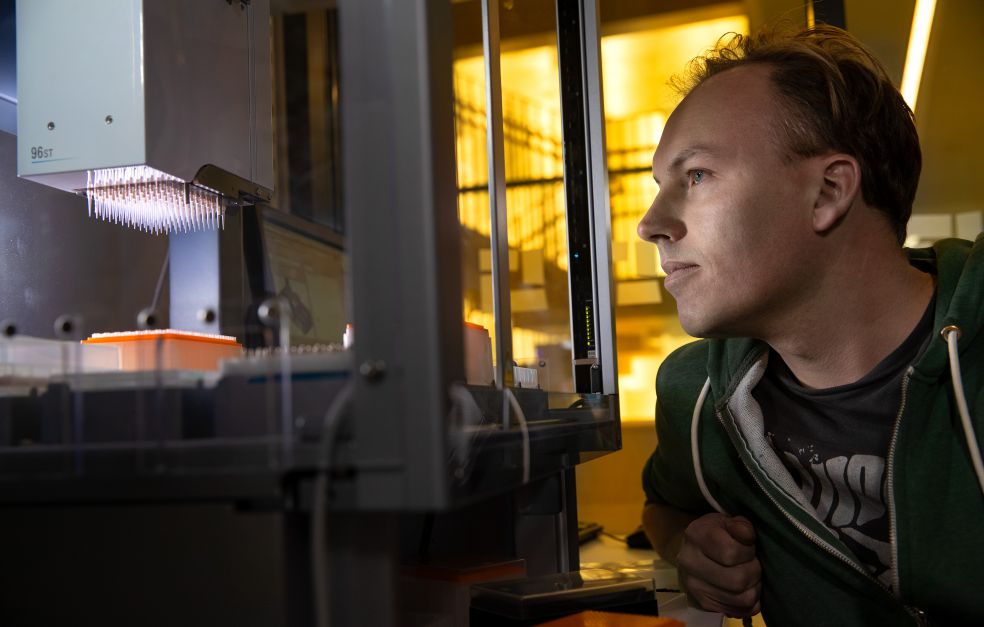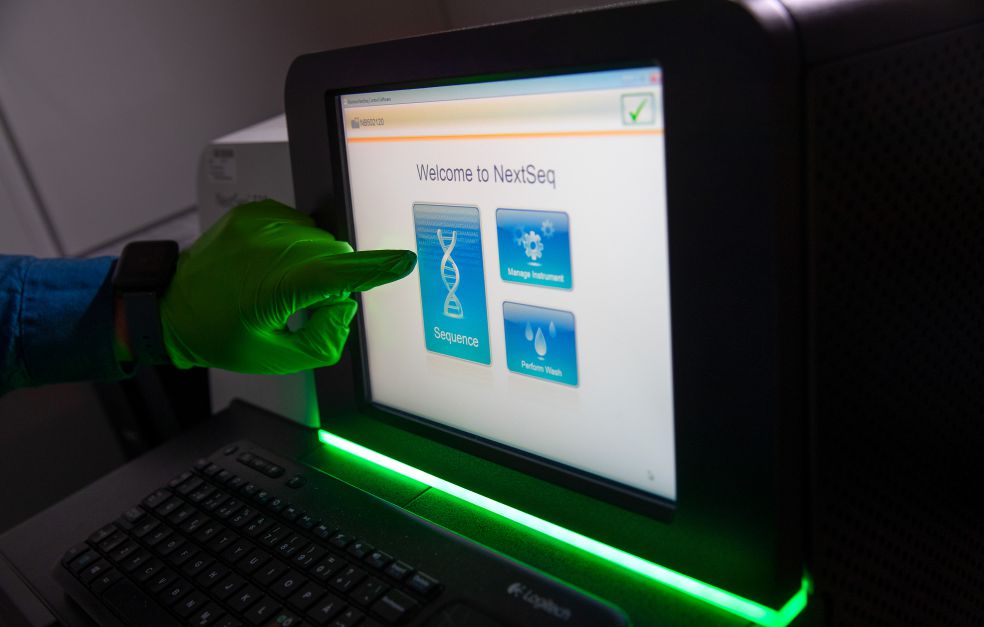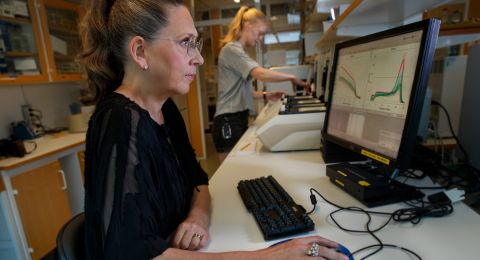
Project Grant 2017
Elucidating the principles of allelic expression and regulation using single-cell genomics
Principal investigator:
Rickard Sandberg, Professor of Molecular Genetics
Institution:
Karolinska Institutet
Grant in SEK:
SEK 18.4 million over five years
“We’re developing methods that enable us to study which gene variants and parts of DNA are used by different cells in the body. This provides us with background information about DNA regulatory systems that we can use to interpret genetic variation and pathological deviations more accurately,” explains Sandberg, who works from a laboratory at Karolinska Institutet’s Biomedicum, Karolinska Institutet in Solna, north of Stockholm.
His research team has access to advanced instruments used for molecular biological studies, as well as powerful servers for storage and analysis of large quantities of data. Their research requires interdisciplinary expertise.
“That’s right – we need people who understand biology, and also possess the right mathematical skills. Half of the team work in front of the computer, where they program and explore all the data we produce. The other half perform the molecular biological work in the lab.”
Most of the cells being studied in the lab come from specially bred mice, which are well suited for these analyses, although human cells are also being studied.
Greater knowledge of DNA regulatory systems, gene activity, and genetic variations will ultimately help us to understand how these factors impact biological processes in cells. This knowledge may in turn be put to use in gaining a better understanding development of various diseases, for example.
Smart single-cell analysis
Using a technique that breaks cell DNA up into small sequences, it is possible to ascertain which nucleotides are present in a DNA or RNA molecule (see fact box), and the order in which they are placed. The sequencing technique may be likened to a sort of molecular microscope.
Sandberg established his research team in 2008. At that time it was necessary to examine tens or hundreds of thousands of cells together to ascertain which parts of DNA were active at different stages, and mean values were obtained for all cells studied. In other words, researchers could see which genes are turned on and off to enable cells to perform their specific functions in the body. Nowadays, just over a decade later, this can be studied in individual cells.
“We now have methods enabling us to routinely take a tissue, break it up into its cellular constituents, and map the sequences in the active fragment for an individual cell.”
Sandberg explains that each time the lab sequencer is run, millions of sequences per cell are generated; they often analyze hundreds or thousands of cells in the same project.
“My lab developed one of the first methods enabling analysis of gene activity in individual cells. Our method, known as Smart-seq2, is still the one that gives the most detailed information about gene activity in individual cells. So it is one of two methods now being used in the Human Cell Atlas Project, a global collaborative scientific community that is mapping the cell types found in the human body.”
The part played by gene variants
The funding provided by Knut and Alice Wallenberg Foundation enables the research team to use its methods for single-cell analysis to delve even deeper into the factors controlling gene activity in our cells.
There are multiple variants of a gene, known as alleles, both within and between individuals. One reason for this is that we inherit half our genes from the mother and half from the father. Sandberg elaborates:
“We measure the quantity of RNA from all genes in many individual cells. This enables us to learn more about the process itself when genes are activated. It is important to separate the activity in progress in the mother’s and the father’s gene copy, since they are independent processes. Only with allele-level data on gene activity in individual cells can we recreate the dynamic flow when genes are activated. Many questions remain as to what exactly happens when a cell chooses to use a specific gene. One aim of our project is to identify the steps in regulation, and how it takes place.”
Frequency and magnitude
Sandberg draws a diagram to explain one of his discoveries.
“If a cell wants to begin using a gene, one way is for it to produce a steady stream of RNA molecules. Anyway, this is what happens when many cells are studied together. But it’s a different story when individual cells are examined. Usually, nothing is produced. Large quantities of RNA are only produced in short bursts. We have managed to map the part of the DNA where the information regulating the frequency and magnitude of these bursts is located”.
One strength of Sandberg’s laboratory is that they can do most of the project work themselves – everything from analyzing cell tissue to molecular biological examinations, sequencing and computational biological analysis. Great efficiency is achieved, enabling all team members to see the big picture of the project. Sandberg explains:
“We can progress very rapidly from an idea to collected data. And when developing new methods, it’s important to have short cycles so we can get feedback as quickly as possible on whether it works.”
Text Susanne Rosén
Translation Maxwell Arding
Photo Magnus Bergström
Facts:
The DNA molecule carries the genetic information in the DNA, along with the instructions that control our cells. The building blocks of DNA (deoxyribonucleic acid) are called nucleotides. They consist of one of four nitrogen bases (A, T, G and C), a sugar molecule and a phosphate group. A gene represents a sequence of A, T, G and C.
Alleles are hereditary variants of a given gene. In humans, for instance, different alleles can influence blood group and eye color.
RNA molecules (ribonucleic acid) have different biological functions. For example, mRNA (messenger RNA) is the copy that transfers the genetic code from DNA when the cell wants to form a protein.
Genetic activity is often analyzed by measuring the concentration of mRNA molecules in cells and tissue.





